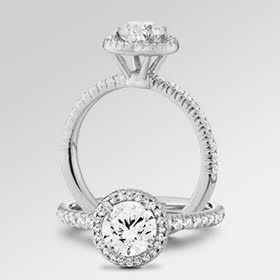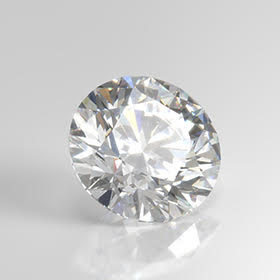In recent years, the diamond industry has seen a major shift. This is due to the emergence of lab-grown diamonds. These gems are grown in a lab by implementing advanced technological processes rather than being mined from the earth. These diamonds have sparked curiosity as well as controversy. Amidst this, numerous misconceptions have arisen. This has clouded the perception of lab-grown diamonds. In this blog, we aim to unravel the myths that surround the lab-grown diamond industry. And we will shed some light on the reality of lab-grown diamonds.
Myth 1: Lab-Grown Diamonds Are Not Real Diamonds
One of the most common myths surrounding lab-grown diamonds is that they are fake. Some myths also state that lab diamonds are inferior to natural diamonds. However, this is far from the truth. Lab-grown diamonds are identical to mined diamonds in almost every aspect. These gems possess the same chemical composition, physical properties, and optical characteristics as natural diamonds. The best lab-grown diamonds are composed of pure carbon atoms arranged in a crystalline structure. This is similar to diamonds that are formed naturally in the earth’s mantle over millions of years.
The origin of the lab-grown diamonds sets them apart from mined diamonds. Instead of being mined from the earth, they are created in a controlled setting in laboratories. This is achieved using advanced technological processes. Chemical Vapor Deposition (CVD) or High Pressure High Temperature (HPHT) methods are used to create these gems in a lab. These two methods reproduce the natural conditions under which diamonds are formed in nature. It results in gems that are chemically and optically identical to their natural counterparts.
Myth 2: Lab-Grown Diamonds Are Not Environmentally Friendly
Contrary to popular belief, the best lab-grown diamonds offer a more sustainable alternative to mined diamonds. The traditional diamond mining process has been haunted by various environmental concerns. This includes habitat destruction, soil erosion, and water pollution. On top of that, the mining process consumes industrial amounts of energy and resources. This further leads to environmental degradation.
In contrast, lab-grown diamonds have a significantly lower environmental impact. The controlled laboratory environment allows for precise resource management. This reduces the overall carbon footprint associated with diamond production. Furthermore, the best lab-grown diamonds eliminate the need for destructive mining practices. This leads to the preservation of fragile ecosystems. This also minimizes environmental damage. By opting for lab-grown diamonds, consumers can support more sustainable practices within the jewelry industry. If it were a competition, then lab-grown diamonds would have surely won it.
Myth 3: Lab-grown diamonds are less valuable.
Another misconception about lab-grown diamonds is that they lack the same intrinsic value as natural diamonds. While it is true that lab-grown diamonds are generally more affordable than their natural counterparts, this does not diminish their value or desirability. The value of a diamond is determined by factors such as cut, clarity, color, and carat weight. And lab-grown diamonds are also judged based on the same factors. All of these factors apply equally to lab-grown diamonds.
In recent years, there has been a growing demand for lab-grown diamonds. Especially among those consumers who prioritize ethical and sustainable practices. As awareness about environmental conservation increases, more and more people will gravitate towards the allure of lab-grown diamonds. When the social impact of traditional diamond mining increases, people will opt for lab-grown diamonds as a socially responsible choice. This shift in consumer preferences is reshaping the diamond industry. It has also led to the acceptance of lab diamonds as a valuable and legitimate alternative.
Myth 4: Lab-Grown Diamonds Lack Brilliance and Beauty
Some skeptics believe that lab-grown diamonds do not possess the same brilliance and beauty as natural diamonds. However, this belief is not backed by reality or the truth. Lab-grown diamonds exhibit the same optical properties as natural diamonds. This includes fire, brilliance, and scintillation. In fact, because they are grown under controlled conditions, lab-grown diamonds can sometimes exhibit even better optical performance than natural diamonds.
Advancements in diamond-growing technology have allowed manufacturers to produce lab-grown diamonds with exceptional clarity and color. They even rival the finest natural diamonds in terms of quality and looks. On top of that, lab-grown diamonds offer a wider range of customization options. This allows consumers to choose unique shapes, sizes, and colors that may be rare or unavailable in natural diamonds. So, one can say with absolute certainty that lab-grown diamonds are better than mined diamonds. The best lab-grown diamonds are far superior to natural diamonds.
Myth 5: Lab-grown diamonds are not a wise investment.
While it is true that lab-grown diamonds are generally more affordable than natural diamonds, this does not necessarily mean they are a poor investment. Like any luxury item, the value of a diamond depends on market trends, consumer demand, and other economic factors. It is the same with lab-grown diamonds. However, lab-grown diamonds offer certain advantages that can make them a compelling investment option.
One such advantage is their ethical and environmental credentials. This appeals to a growing segment of socially conscious consumers. As sustainability becomes an increasingly important consideration for consumers, the demand for lab-grown diamonds is expected to rise. This will potentially drive up their value over time. On top of this, lab-grown diamonds offer greater price transparency and predictability compared to natural diamonds. This can cause fluctuations in supply and demand.
Myth 6: Lab-grown diamonds are only for those on a budget.
There is a common misconception that states that lab-grown diamonds are only for those who are on a budget. However, this is not backed by reality. While lab-grown diamonds can offer cost savings compared to natural diamonds, they are also chosen by consumers for their ethical and environmental considerations. On top of that, lab-grown diamonds are available in a wide range of sizes, qualities, and price points, making them accessible to a diverse range of consumers. The cost of lab-grown diamonds makes them a preferred alternative. You can get a bigger lab-grown diamond instead of opting for smaller mined diamonds. People also opt for lab diamonds because these gems can be created in a wide range of colors. These colored lab-grown diamonds are desired for their beauty and quality.
Conclusion
In conclusion, lab-grown diamonds are a legitimate and valuable alternative to natural diamonds. There are several misconceptions that surround them. Still, these gems remain the best choice. Lab-grown diamonds are gemstones that offer numerous benefits. This includes sustainability, ethical sourcing, and customizable options. These factors make lab diamonds an attractive choice for consumers who value transparency and social responsibility. By debunking the myths surrounding lab-grown diamonds, we can foster a more informed and inclusive conversation about the future of the diamond industry. If you are looking forward to investing in lab-grown diamonds, then you are making the best decision. The several advantages of lab-grown diamonds make them the best choice in comparison to mined diamonds. By opting for lab diamonds, you will save not only money but also the environment. So consider all the above-mentioned factors and make the right decision.










